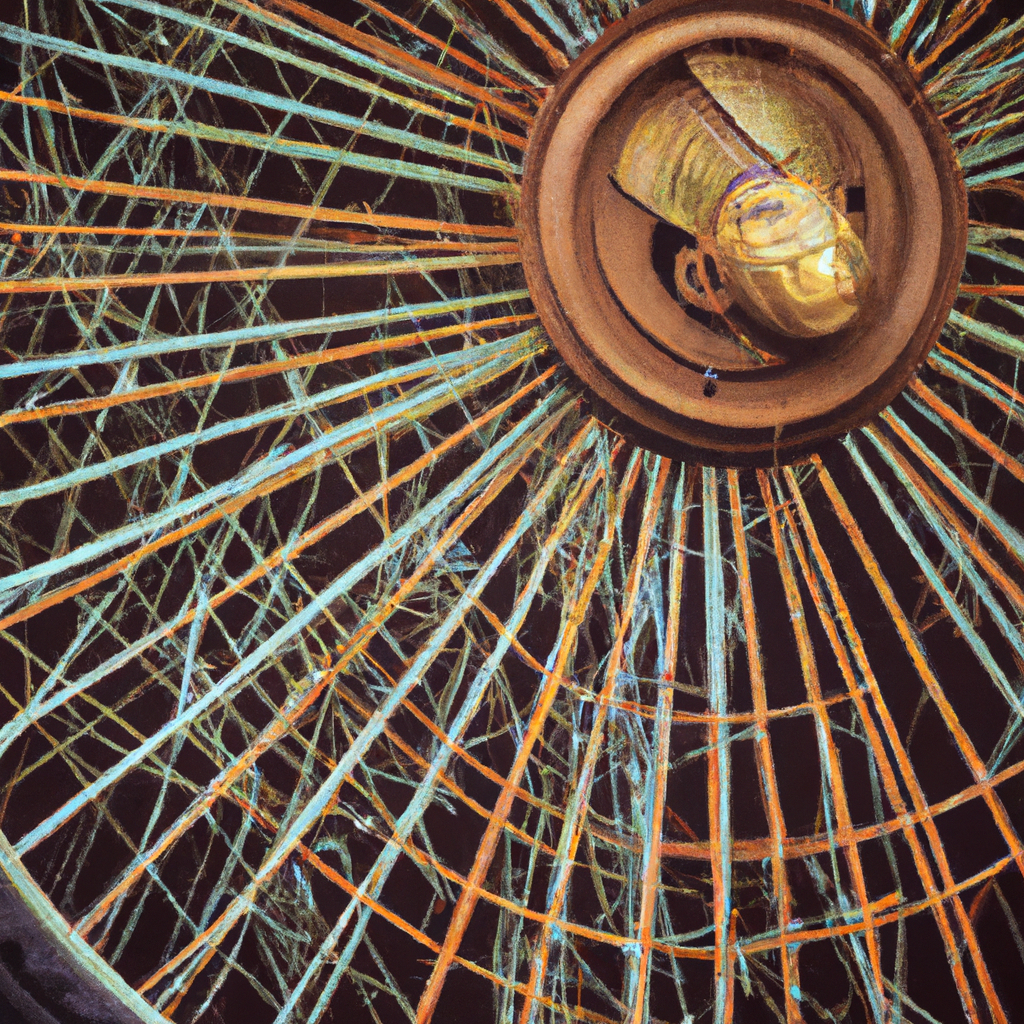Reclaiming and transforming discarded materials for art is a growing trend that offers a unique twist on both sustainability and creativity. Recycled art takes old objects and gives them new meaning and purpose, as well as providing an environmentally friendly way to produce art. Through the use of repurposed junk and natural debris, sculptors are able to create beautiful and meaningful works of art that represent both environmental stewardship and creative expression. In this article, we explore the sustainability and creativity behind recycled art, to see how these artworks are helping to raise awareness and inspire a new generation of eco-friendly artists.
1. From Trash to Treasure: Unleashing the Potential of Recycled Materials
Recycled materials can provide excellent raw materials for a variety of uses. From plastic bottles and paper products to scrap metals and fabric, many items can be salvaged and converted into something useful. Here’s an idea of how to turn trash into treasure:
Furniture: Wood scraps, pallets, and furniture components are all excellent candidates for furniture construction. With some imagination, you can use these items to construct end tables, dining room sets, and children’s furniture.
Kitchen Utensils: Metal brackets, wire racks, and even cutlery can be creatively combined to construct a variety of kitchen tools. With a few simple additions like wood or colored board, you can create cookware holders, pot racks, plates, bowls, and much more.
Lighting: At first glance, you might not realize the potential of old cans, mason jars, fabric scraps, and bottle corks. When combined, however, these materials can be used to create one-of-kind lamps and wall sconces.
Gardening Products: Turning scrap materials into reusable gardening products can bring a unique touch to any outdoor space. Create intricate trellises out of PVC piping, use ribbon or tape to create a stylish fence, or combine paint and wood scraps to create a custom garden gate.
Artwork & Decor: Repurposed materials are also wonderful when used to create artwork or decorations. Wine corks can be used for canvas frames, Mason jars and ribbons can be used to make floral arrangements, and fabric scraps can be used to create quilts or stuffed animals.
DIY Gifts: Crafting gifts out of discarded materials is a great way to express your love and thoughtfulness to someone special. Try turning an old newspaper into a useful tote bag or making a jewelry holder from paint cans. Get creative and make a one-of-a-kind piece of recycled art for that special someone.
2. Revolutionizing Art: Exploring the Intersection of Sustainability and Creativity
- The Emergence of eco-Art
As the environmental movement gains traction, art forms are beginning to emerge that aim to explore and celebrate the intersection of sustainability and creativity. Eco-Art is an umbrella term for a variety of art forms and projects that place emphasis on sustainability and actively seek to reduce the environmental impact of artwork. These new forms of artwork are pushing the boundaries of traditional notions of beauty and inspiring a surge of creativity as we reimagine our relationship to the environment.
- Integrating Sustainability into Art
When it comes to eco-Art, the emphasis is on incorporating sustainable practices into artwork. From recycled or reused materials to largely solar-powered studios, eco-Artists strive to create works of beauty that also honor the environment. This can take shape in a variety of forms, from quilting with recycled fabrics to creating sculptures with upcycled materials. By finding new ways to repurpose everyday objects, eco-Artists are demonstrating just how much waste and disruption an artwork can avoid.
- Inspiring the Future of Artistry
Eco-Artists are inspiring a new generation of art-lovers to reconsider their relationship to the environment and to use their work to create something beautiful and meaningful while still reducing the environmental impact of their creations. The impact of eco-Art is far-reaching and leaves behind a lasting legacy of true beauty. As these projects continue to gain momentum, it will soon become clear just how revolutionary these works of art can be.
- Advocating for Eco-Friendly Practices
Finally, just as eco-Art works to inspire and amplify the impact of sustainable artwork, it also serves as an advocate for the use of eco-friendly practices in everyday life. The ethos of eco-Art is to use sustainable practices to create something beautiful. By raising awareness of eco-friendly practices through the power of art, eco-Artists are actively working to preserve the environment and leave behind a lasting impression of beauty for future generations.
3. Sculpting a Greener Future: Repurposing Waste into Stunning Artworks
We live in a world where resources are increasingly scarce, and waste is an ever-growing problem. Fortunately, innovative artisans are coming up with unique and creative ways to reuse materials, by transforming mundane objects into beautiful and eye-catching artworks.
By sculpting a greener future, these artists are helping to reduce the world’s waste levels while creating unique and exciting art pieces. From items as large as cars and TVs to tiny objects like bottle caps and bottle tops, the possibilities are seemingly endless.
For example, Frank Duveneck, a North American artist, creates stunning abstract sculptures entirely out of discarded plastic that’s been melted and re-shaped. His intricate works of art meld color, texture, and form to create mesmerizing pieces.
In the same vein, Japanese artist Noriyuki Enoki has an ever-growing collection of artworks – from sculptures to masks – made out of recycled materials. His creations can be used as both functional and decorative objects and are a testament to the power of upcycling.
Additionally, London-based sculptor Bruce Gilchrist has established a unique practice that combines technology and upcycling to create compelling installations and sculptures. Using found objects, discarded materials, and technology, Bruce creates installations that are both visually and conceptually stimulating.
From these talented artists, we can learn how to make the most of our waste and resources by repurposing them into works of art. Through upcycling, sculpting, and creative reuse, there’s a universe of possibilities waiting to be explored.
- Frank Duveneck: North American artist
- Noriyuki Enoki: Japanese artist
- Bruce Gilchrist: London-based sculptor
4. Crafting Masterpieces with a Conscience: The Inspirational World of Recycled Art
Recycled art is an inspirational and captivating creative practice, focused on creating unique works of art with the help of reused and recycled household items. These pieces are often used to spread a message, raise awareness and lend a voice to certain causes.
- Beautiful Upcycling: Transform old, everyday materials into eye-catching works of art.
- Eco-Friendly Design: Create intricate designs of recycled materials as a showcase of sustainable craftsmanship.
- Inspirational Messaging: Encourage and ignite dialogue surrounding pressing environmental and social issues.
From Household Junk to Functional Furniture: Recycled art works can take many shapes and sizes. From refashioning plain objects into new and exciting shapes, to adding personal touches to plain furniture pieces. These stylish and upcycled furnishings make the perfect addition to a home and can be used to inspire and lend a creative touch to any interior.
By giving old, forgotten objects a new life, recycled artists can create awe-inspiring works of art, while also aiming to influence public opinion and bring attention to socially relevant causes. These pieces often make use of eye-catching materials, jarring juxtapositions and intricate details.
Recycled art is the perfect way to express creativity, spark conversations and help the environment, all simultaneously! Crafting masterpieces with a conscience just might be the art world’s most important new trend.
By blending creativity with sustainability, sculptors are pushing recycled art to new heights and inspiring future generations to think more critically about their environmental impact. From upcycles to reinterpretations, the possibilities are as nearly as vast as imagination can take them—and the results are beautiful.




